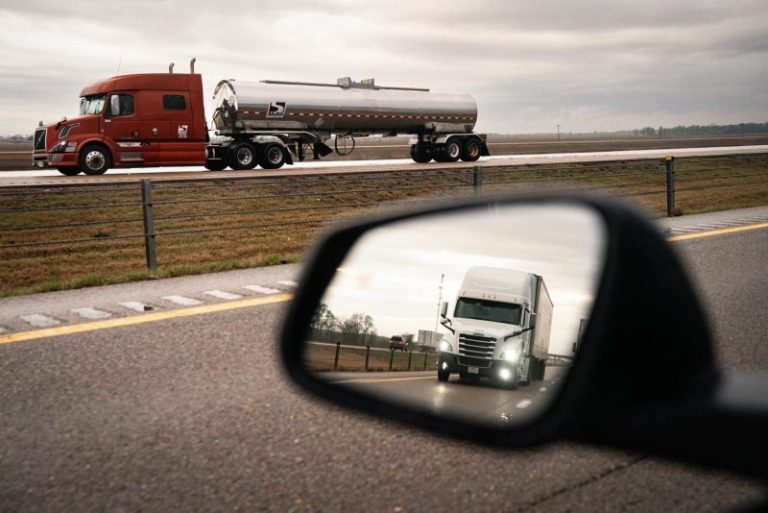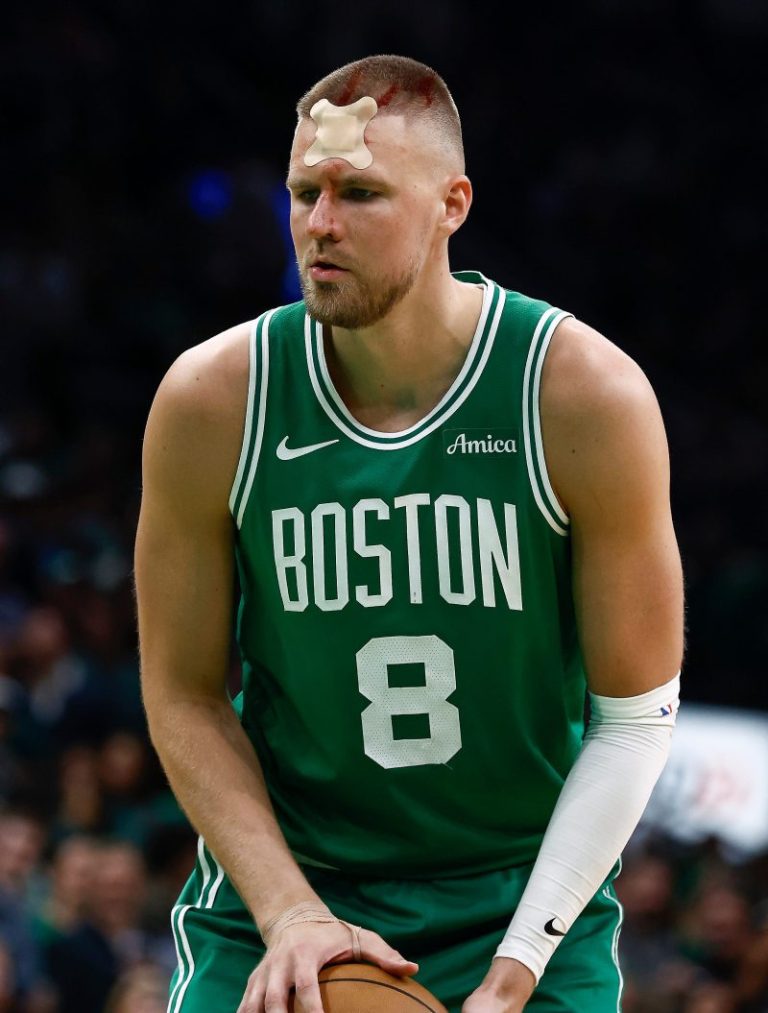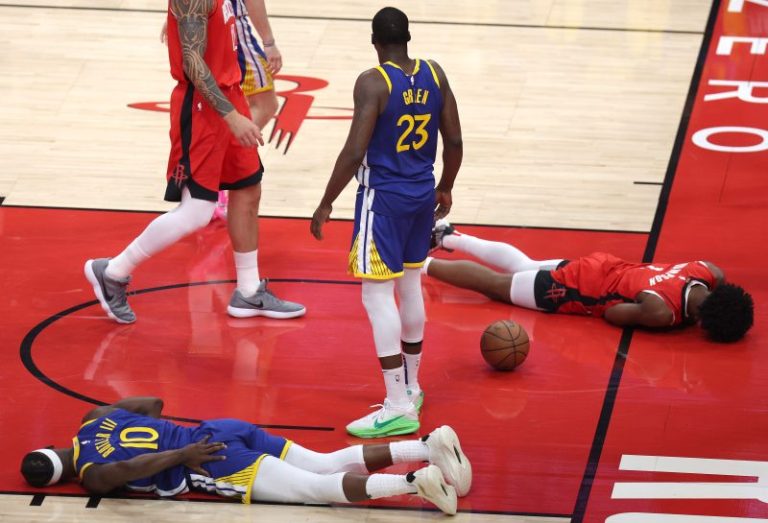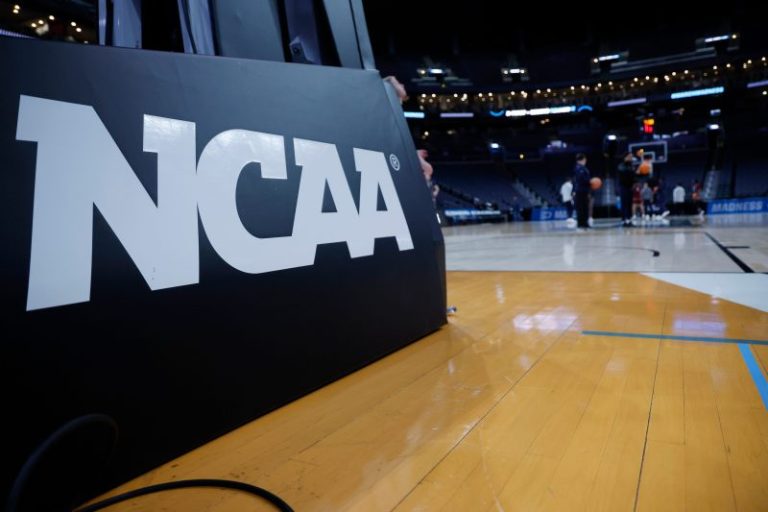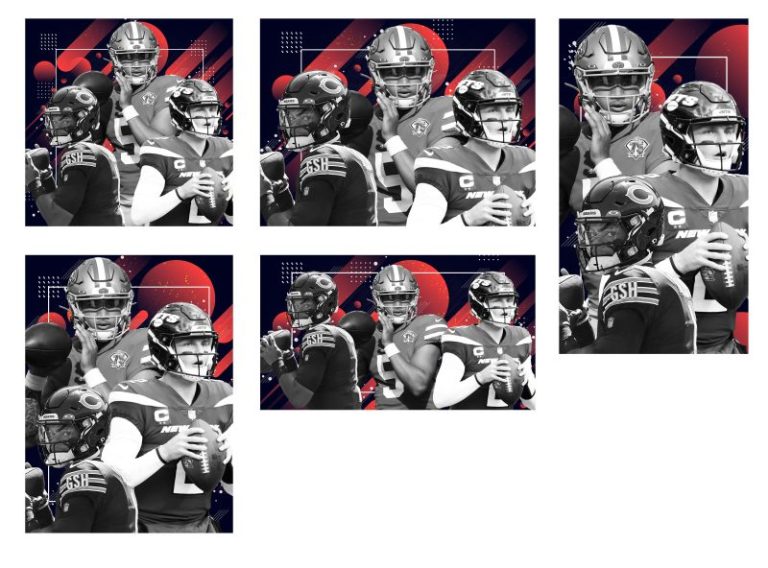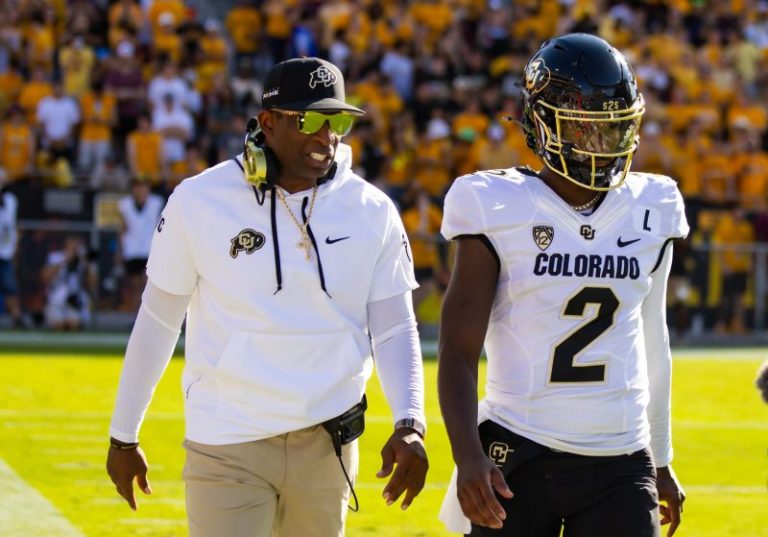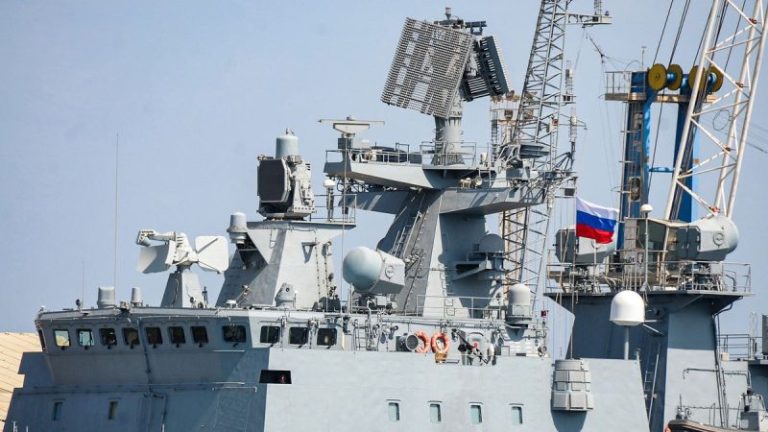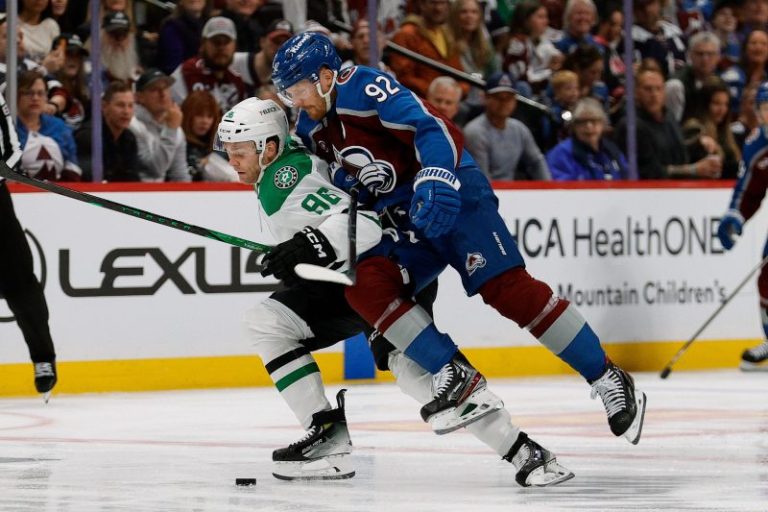This week marks the four-year anniversary of what’s turned out to be a remarkable 2021 NFL draft.
The haul from the league’s 86th ‘Player Selection Meeting’ includes quite a few players who appear to be on the Hall of Fame fast track: Micah Parsons, Ja’Marr Chase, Penei Sewell, Patrick Surtain II, Amon-Ra St. Brown. And the likes of DeVonta Smith, Creed Humphrey, Landon Dickerson and Nico Collins are hardly slouches.
Yet that draft is, well, ‘remarkable’ for another reason. You’ll notice no quarterbacks are listed above even though they were touted as the backbone of the group at the time − and five were taken among the first 15 picks, including each of the first three. But fast forward to 2025, and the only member of that quintet who remains with the team that drafted him is the Jaguars’ Trevor Lawrence … and he hasn’t exactly been the generational passer he was forecast to be (even if he’s made a boatload of money while qualifying for one Pro Bowl). Meanwhile, Zach Wilson, Trey Lance, Justin Fields and Mac Jones all joined their third NFL teams earlier this offseason.
It’s a collection of players who pretty well encapsulate what’s basically the inherent boom-or-bust nature of the draft – and four years on, it becomes fair enough to begin affixing the dreaded bust label, especially as it pertains to when and where a player was drafted. And maybe, a la Sam Darnold or Baker Mayfield, some of the 2021 QBs can still rehabilitate their careers – but that doesn’t mean the damage isn’t done in their wake, whether or not it was truly a function of some personal shortcoming or simply a suboptimal situation.
Admittedly, the indictment of the 2021 draft’s heretofore failures may smack of recency bias, however some of its members have truly earned a spot on this list of the 50 hugest busts of the past 50 years.
Some words about the methodology: This ranking and analysis are certainly interspersed with opinion. But I tried not to view these wayward picks in a vacuum – taking into account what teams sacrificed to take a player, either in terms of trade currency or whom they opted not to select, when evaluating each bust. Some deals themselves are included since many prevented teams from choosing superior options. Naturally, extra weight was given to quarterback gaffes.
Lastly, I tried to have some fun and creativity in select spots to keep you engaged, so try not to get too bent out of shape if that guard or safety your team took in the top 10 before he petered out didn’t warrant a mention.
Here we go – and you’ll note I managed to shoehorn more than *50* players into this list:
1. QB Ryan Leaf, 2nd overall 1998, Chargers
It seems patently obvious who was superior more than a quarter-century after the fact, but he was very much in the conversation to be this draft’s No. 1 pick. Of course, the Colts wisely chose eventual five-time league MVP Peyton Manning. Meanwhile, the Bolts set themselves back years by taking Leaf (4-14 in 18 starts for the club with a 48.8 passer rating), whose gross immaturity and inability to solve pro defenses trumped his vast physical talent. What cements his infamy is the price San Diego paid to simply swap its initial No. 3 pick to get Arizona’s spot at No. 2 (more on that later). But the freight the Cardinals commanded, aside from the switch, was a second-rounder, an additional first-rounder in 1999 and two veterans (WR Eric Metcalf and LB Patrick Sapp). Oof.
2. OT Tony Mandarich, 2nd overall 1989, Packers
The Sports Illustrated cover boy deemed ‘The Incredible Bulk’ prior to the draft – he had uncommon athleticism and size for the position at the time – was labeled ‘The NFL’s Incredible Bust’ by SI only three years later. Mandarich’s steroid-fueled body and poor work ethic didn’t hold up against professional competition, and he later descended into drug and alcohol abuse. Any value he later provided at guard might have helped the Colts but obviously didn’t do the Pack any good. But this context truly frames his failure: Mandarich was the only player selected in the top five that year who didn’t wind up in the Pro Football Hall of Fame. Troy Aikman went No. 1, but Green Bay passed on Barry Sanders, Derrick Thomas and Deion Sanders.
3. QB JaMarcus Russell, 1st overall 2007, Raiders
It turned out to be a miserable year for passers, the likes of Brady Quinn, Kevin Kolb, John Beck and Drew Stanton also taken way too early. But Russell, who began his career with a lengthy holdout, never fulfilled the hype generated by his howitzer arm and legendary pro day. He lasted just three seasons, losing 18 of 25 starts and compiling an abysmal 65.2 passer rating, before laziness and weight gain washed him out of the league. Who could Oakland (at the time) have taken instead? Calvin Johnson, Joe Thomas, Adrian Peterson, Patrick Willis, Marshawn Lynch and Darrelle Revis all came off the board in the first half of Round 1.
4. QB Trey Lance, 3rd overall 2021, 49ers
San Francisco surrendered four picks, three of them first-rounders, to get into position for a guy who was basically a one-year starter at North Dakota State. In fairness to Lance, incumbent QB Jimmy Garoppolo, subsequent injuries and a shoddy development plan that HC Kyle Shanahan largely blamed himself for derailed Lance before he had a legitimate chance to prove himself in Silicon Valley. But the Niners saw enough to pull the plug after two years, opting to give the reins to 2022 seventh-rounder Brock Purdy and sending Lance to Dallas for a Round 4 pick. (He signed with the Chargers earlier this month.) But just imagine if the 49ers had taken Chase, Sewell, Surtain or Parsons instead of Lance … who maybe eventually blossoms elsewhere, little good as that will do San Fran.
4a. QB Zach Wilson, 2nd overall 2021, Jets
Now queue up the unfortunate 2021 QB corollaries – and brace yourself, Jets fans, as this is merely the first of many mentions. The NYJ effectively threw in the towel on Wilson in 2023 after trading for four-time league MVP Aaron Rodgers … then were quickly forced to turn back to the BYU product, who again miserably failed in his third attempt to produce at a level commensurate with his draft billing. Traded to the Denver Broncos during last year’s draft, Wilson is now with the Miami Dolphins – his NFL completion rate (57%) and passer rating (73.2) presently married to 23 TD passes and 34 turnovers. The mistake is magnified by the fact the Jets could have augmented the roster in 2021 around Darnold with Chase, Sewell, Surtain or Parsons, among others, all available.
4b. QB Mac Jones, 15th overall 2021, Patriots
With the help of former New England OC Josh McDaniels, he looked like a legitimate NFL starter … for a year, anyway. Then it all fell apart for Jones, also largely undermined by an organization that didn’t give him sufficient positional coaching or playmakers. It got so bad in 2023, the decision was made to send Jones home in a trade with Jacksonville, where he backed up Lawrence in 2024. Now, like Darnold, Jones is hoping to initiate something of a career reboot while apprenticing with Shanahan and the 49ers.
4c. QB Justin Fields, 11th overall 2021, Bears
Recently signed by the Jets after a perplexing year in Pittsburgh, maybe a guy with titillating dual-threat abilities resurrects his career in New York. But not before the Bears sent four draft selections (including two first-rounders) to the Giants to get Fields four years ago … then almost completely failed to put a legitimate supporting cast around him for two seasons. Many of Fields’ frequent failures must be laid at the doorstep of Halas Hall, a building that’s been so dysfunctional in recent years that the Bears were in position to replace him just three years later – 2024 No. 1 pick Caleb Williams now charged with trying to overcome his surroundings.
5. QB Jeff George, 1st overall 1990, Colts
He looked like Uncle Rico, threw like him, too … and basically played like the “Napoleon Dynamite” folk hero. Navigating into the top spot for George forced Indianapolis to surrender Pro Bowl OT Chris Hinton, future Pro Bowl WR Andre Rison and a first-round pick in 1991 to Atlanta – where George wound up himself in 1994 after wearing out his welcome with a bad attitude and 14-35 record for the Colts, who passed on three eventual Hall of Famers in the first round (more on them later). Never particularly popular in the locker room, George played for five different teams – and did post better numbers, if not many more wins, later in his career.
6. RB Lawrence Phillips, 6th overall 1996, Rams
Bad player. Bad dude. And St. Louis should have known better. The Rams parted with DT Sean Gilbert to acquire the Phillips pick – Eddie George was still available – and they exported Jerome Bettis to Pittsburgh in a separate deal to clear the way for Nebraska’s fallen star. Phillips averaged 3.4 yards per carry and didn’t make it through his second season with the Rams, cut amid excessive in-season drinking.
7. Jets’ decisions to trade down in 1997
After going 1-15 in 1996, Gang Green most definitely earned the No. 1 pick of the ’97 draft – which they surely would have used for Manning … had he opted not to return to the University of Tennessee for his senior year. (And you can argue that newly acquired coach Bill Parcells could have done more to entice Manning to go pro, but that’s neither here nor there.) However after Manning was off the table, Parcells dealt down from No. 1 to No. 6 in a bid to restock this roster, passing on the opportunity to snatch future Hall of Fame LT Orlando Pace. Then Parcells dropped from No. 6 to No. 8, passing on the opportunity to get future Hall of Fame LT Walter Jones. (Ugh and ugh.) LB James Farrior, who was much better in Pittsburgh later in his career than during his Gotham stint, ‘headlined’ New York’s forgettable haul, which could have also included Hall of Fame TE Tony Gonzalez, who went 13th.
8. Colts’ decision to draft John Elway No. 1 in 1983
His talent obviously justified the selection, but team brass should have taken Elway seriously when he threatened to play baseball rather than for Baltimore. In the end, he launched his Hall of Fame career in Denver while the Colts were left with Hinton, backup QB Mark Herrmann, a first-round pick in 1984 (spent on G Ron Solt) and, in a year’s time, a one-way, franchise-wide ticket to Indianapolis.
9. QB Robert Griffin III, 2nd overall 2012, Washington
The team shipped three first-round picks and one in Round 2 to the Rams for the chance to take RG3. Initially, it seemed a reasonable gambit as the 2011 Heisman Trophy winner won Offensive Rookie of the Year honors while leading a charge to the NFC East title. The rest is unfortunate history, both for Griffin personally and the organization at large. But Washington may finally be picking up the pieces now that Jayden Daniels has arrived as the latest presumed savior.
9a. Rams’ haul for Robert Griffin III
On the opposite end of the RG3 coin? St. Louis parlayed its bounty into Michael Brockers, Janoris Jenkins, Isaiah Pead, Rokevious Watkins, Alec Ogletree, Stedman Bailey, Zac Stacy and Greg Robinson. Some decent (and not-so-decent) players there, but obviously not a group that came anywhere close to salvaging the NFL in The Gateway City, much less providing the bedrock for a perennial powerhouse.
9b. DE Chase Young, 2nd overall 2020, Washington
Basically the defensive version of RG3 – a rookie of the year before suffering a serious knee injury and ultimately falling out of favor with the organization. A player who entered the league with astronomical expectations – reference the frequent (and unfair) Lawrence Taylor comparisons – Young had 7½ sacks in 2020 … and 6½ total over his next three seasons with Washington before being unceremoniously traded for a third-rounder in 2023. Justin Jefferson, Justin Herbert, CeeDee Lamb and Tristan Wirfs were among the players taken later in Round 1 of Young’s draft.
10. OLB Aundray Bruce, 1st overall 1988, Falcons
Atlanta also thought it was getting the next Taylor. Nope. Bruce was no better than a sub package guy, including spot duty at tight end. There were five Hall of Famers picked elsewhere in Bruce’s draft and a dominant pass rusher (Neil Smith) directly after him.
11. RB Bo Jackson, 1st overall 1986, Buccaneers
Don’t get it twisted – this isn’t a dig at a guy who might truly be a ‘once-in-a-lifetime’ athlete. Instead, interpret it as a dig at a long-feckless franchise that chose to squander its pick even though Jackson had vowed never to play in Tampa, believing the team deliberately cost him his baseball eligibility at Auburn while trying to strong-arm him into a football-only career. The Bucs took Jackson anyway, and he was soon stroking towering taters for the Kansas City Royals … before joining the Raiders in 1987.
12. OT Robert Gallery, 2nd overall 2004, Raiders
He never approached his pre-draft buildup and, like Mandarich years before, only became serviceable after moving to guard. Who could Oakland have had instead? Larry Fitzgerald, Philip Rivers, Sean Taylor and Ben Roethlisberger heard their names called shortly after Gallery’s selection.
13. RB Blair Thomas, 2nd overall 1990, Jets
To think future Hall of Famers Cortez Kennedy and Junior Seau were sitting there. Or, if New York really had to have a tailback, eventual all-time leading rusher Emmitt Smith was around until No. 17. He only wound up outrushing Thomas by 16,000 yards.
14. Bills’ decision to draft Tom Cousineau No. 1 in 1979
Buffalo owned the choice after dealing O.J. Simpson to the 49ers. But Cousineau took the Canadian Football League’s money and bolted, never playing a down for the Bills. Hall of Famers Dan Hampton and Kellen Winslow went later in that first round.
15. Seahawks’ decision to trade down in 1977
They were induced to deal out of No. 2 after Tony Dorsett threatened not to play in Seattle, so the Cowboys moved up for the future Hall of Fame back. The Seahawks were left with Steve August, Tom Lynch, Terry Beeson and Glenn Carano. Who? Exactly. Guess who won the Super Bowl the following season …
16. QB Art Schlichter, 4th overall 1982, Colts
On the field, he was horrendous (42.6 passer rating). Off the field, he was worse, his gambling problems leading to his suspension for the 1983 season and, later, prison. Schlichter’s issues also forced Baltimore into its ill-advised Elway pick the next year.
17. QB Jack Thompson, 3rd overall 1979, Bengals
The ‘Throwin’ Samoan’ never threw very effectively in six NFL seasons. Furthermore, Cincinnati was just fine behind center anyway with Ken Anderson, who would lead the Bengals to their first Super Bowl two years later. Also, Phil Simms was chosen four slots after Thompson – or, if Cincy needed, like, a developmental quarterback, they could have had, uh, Joe Montana in Round 3 …
18. DE Dion Jordan, 3rd overall 2013, Dolphins
The slender pass rusher was repeatedly suspended and only rewarded Miami with three sacks in two seasons. The Dolphins paid a first- and second-round pick to Oakland to get the Oregon prospect. Philadelphia took future All-Pro OT Lane Johnson with the next selection.
19. WR Johnny ‘Lam’ Jones, 2nd overall 1980, Jets
New York hoped his Olympic speed would translate into stardom. Not so much. Jones never looked natural as a receiver, often leaving his feet while trying to catch easy passes. The next player taken was Hall of Famer Anthony Munoz, arguably the best left tackle of all time. The next receiver selected was Hall of Famer Art Monk. Yeah.
20. DT Steve Niehaus, 2nd overall 1976, Seahawks
Seattle’s maiden draft selection didn’t turn out nearly as well as fellow expansion franchise Tampa Bay’s after the Bucs landed future Hall of Famer Lee Roy Selmon at No. 1. (The Seahawks recovered by acquiring HOFer Steve Largent, who was taken by the Oilers in Round 4 that year.)
21. Buccaneers’ decision to trade down in 1978
Confident in RB Ricky Bell, the No. 1 pick in 1977, Tampa Bay sent the top pick of ’78 to Houston for TE Jimmie Giles and four selections, including a first- and second-rounder. The Oilers? Hello, Earl Campbell.
22. QB Josh Rosen, 10th overall 2018, Cardinals
Arizona traded a first-, third- and fifth-round pick to move up five spots to snatch him 10th overall in 2018. He flopped as a rookie and was replaced by Kyler Murray atop the 2019 draft … when Rosen also burned the Dolphins, who gave up a Round 2 pick to rescue him from the desert before he failed in Miami. Like Darnold, Rosen was a victim of circumstances, but the Cards wouldn’t have reset had they picked Lamar Jackson in 2018 instead.
23. CB Jeff Okudah, 3rd overall 2020, Lions
No corner has ever been picked higher. But heading into his sixth season – when many first-rounders are already raking in money from lucrative second contracts – Okudah is resetting with his fourth team (Minnesota). He’s missed 40 games in his career to date. Worse, quarterbacks have a 103.8 passer rating when targeting the former Ohio State star. Oh, and just to repeat, Justin Jefferson, Justin Herbert, CeeDee Lamb and Tristan Wirfs were among the players taken later in Round 1 that year.
24. P Russell Erxleben, 11th overall 1979, Saints
Groan. Known for his record 67-yard field goal in college with Texas, he proved neither the kicker nor punter New Orleans envisioned. Erxleben is the highest-drafted special teamer of the common draft era (since 1967), going two spots ahead of Hall of Famer Winslow. Erxleben landed in prison later in life for securities fraud.
24a. K Steve Little, 15th overall 1978, Cardinals
Taking a kicker in Round 1, especially in an era when the position was far less reliable, could be forgiven. But not if your guy misses 14 of 27 field goal attempts in three seasons … and when you could’ve had Ozzie Newsome or Doug Williams.
25. QB Sam Darnold, 3rd overall 2018, Jets
In the former USC star’s robust defense, New York did next to nothing to help him flourish, Darnold’s development further hampered by foot and shoulder injuries, mono and checked-out HC Adam Gase. But given then-GM Mike Maccagnan surrendered the No. 6 overall pick (used by the Colts on future All-Pro G Quenton Nelson) and three high second-rounders to advance three slots in order to get into position for Darnold – and he seemed like a slam-dunk acquisition at the time – it’s hard to view this gamble as anything other than a failure given his inability to overcome his circumstances … especially as QBs drafted later (2019 and 2023 MVP Lamar Jackson, 2024 MVP Josh Allen) figured out how to thrive. Yet Darnold finally did, too, last year, when he blossomed into a Pro Bowler with the Minnesota Vikings … success he hopes to sustain in Seattle now.
26. OLB Vernon Gholston, 6th overall 2008, Jets
He played 45 games for New York. He registered nary a sack.
27. QB Kelly Stouffer, 6th overall 1987, Cardinals
He held out his rookie season and got traded to Seattle. Lucky for the Cards, given Stouffer (7 TD passes, 19 interceptions in five seasons) would make subsequent Seahawks franchise QB Rick Mirer – continue reading – look like an All-Pro.
28. WR Troy Williamson, 7th overall 2005, Vikings
Minnesota basically traded Randy Moss to Oakland in order to get this guy … who finished with 153 fewer TDs than Moss.
29. TE Kyle Brady, 9th overall 1995, Jets
New York could have had Warren Sapp. Or Ty Law. Or Derrick Brooks. But in typical J-E-T-S fashion, they screwed it up royally. (And the availability of Law and Brooks didn’t deter the Jets from taking DE Hugh Douglas 16th overall, either.)
30. QB Sam Bradford, 1st overall 2010, Rams
He certainly wasn’t a bad player, and many forget he was Offensive Rookie of the Year. But his injury history at Oklahoma was predictive. The six players selected after Bradford? Ndamukong Suh, Gerald McCoy, Trent Williams, Eric Berry, Russell Okung and Joe Haden, with Earl Thomas off the board at No. 14. Bradford later cost Minnesota a first- and fourth-rounder in 2016 to replace Teddy Bridgewater but didn’t get the Vikings to the postseason and lost his job to Case Keenum the next year. Bradford never appeared in a playoff game.
31. Browns’ haul for Julio Jones
Cleveland dealt the sixth pick in 2011 to Atlanta – Falcons GM Thomas Dimitroff was widely panned for paying so much to get Jones – and ultimately wound up with NT Phil Taylor, WR Greg Little, FB Owen Marecic and QB Brandon Weeden. (Good job, Tom.)
32. Browns’ 2012 draft
As bad as Weeden (22nd overall) was, RB Trent Richardson, the No. 3 pick, was worse based on relative value. Cleveland sent Minnesota four picks to swap from fourth to third overall. Even when the Browns flipped Richardson to the Colts for a first-round pick in 2013, they eventually wound up with Johnny Manziel.
32a. Browns’ 2014 draft
Manziel (22nd overall) was dreadful. CB Justin Gilbert, the No. 8 pick, was a bigger blunder given his slot.
33. QB Brady Quinn, 22nd overall 2007, Browns
Not only did he add to Cleveland’s litany of quarterback washouts, he cost the Browns a first- and second-round pick in order to trade up for him. (In case you hadn’t noticed, it’s a QB death knell to get drafted by Cleveland at No. 22.)
34. QB Akili Smith, 3rd overall 1999, Bengals
Just abject in four seasons (3-14 record, 5 TD passes, 13 INTs). The next four players taken were Edgerrin James, Ricky Williams, Torry Holt and Champ Bailey. No. 12 selection Cade McNown, Chicago’s QB failure that year, looked all-world relative to Smith.
35. WR Charles Rogers, 2nd overall 2003, Lions
Sadly, he couldn’t evade drugs or injuries. Also, future Hall of Famer Andre Johnson went to the Texans with the next pick.
36. QB Heath Shuler, 3rd overall 1994, Washington
He was a better congressman than quarterback – and wasn’t even the best passer Washington picked in 1994, seventh-rounder Gus Frerotte proving far superior.
37. DE Andre Wadsworth, 3rd overall 1998, Cardinals
Often forgotten in the aftermath of the Manning-Leaf debate atop that year’s draft, but some scouts considered Wadsworth a better prospect than both quarterbacks. Knee injuries sapped his vast potential after just three seasons. Hall of Famer Charles Woodson was chosen next.
38. QB Rick Mirer, 2nd overall 1993, Seahawks
That year’s Drew Bledsoe consolation prize, Mirer was wretched in four years with Seattle (20-31 record, 65.2 passer rating). Oh, and Hall of Famers Willie Roaf and Bettis were available in the top 10.
38a. Bears’ 1997 trade for QB Rick Mirer
Forgot about this, didn’t you? Seattle stole Chicago’s first-round pick in exchange for Mirer, who was even worse in one season in the Windy City. Meanwhile, the Seahawks recovered to draft stud CB Shawn Springs.
39. QB Mitchell Trubisky, 2nd overall 2017, Bears
Another botched move by Chicago atop a draft in an ill-considered bid to fix the century-old organization’s ongoing quarterback conundrum. To simply swap the No. 2 and No. 3 overall selections, the Bears had to give the 49ers a third- and fourth-rounder plus a future third-rounder (used on eventual All-Pro LB Fred Warner in 2018). GM Ryan Pace then picked Trubisky, who was middling at best while starting for two Bears playoff teams – the 2018 edition was Super Bowl-caliber otherwise – when he could have had Patrick Mahomes or Deshaun Watson.
39a. DL Solomon Thomas, 3rd overall 2017, 49ers
For all the capital the Niners inhaled in the Trubisky deal, they flubbed much of it by taking the disappointing Stanford star before trading the 2017 third-round pick … which the Saints used on perennial Pro Bowl RB Alvin Kamara.
40. Raiders’ 2020 draft
As much trouble as former GM Mike Mayock ran into in early rounds, this was the class that ultimately might have gotten him fired. First-rounders Henry Ruggs and Damon Arnette (the latter obtained as part of the Khalil Mack trade years before) were both released in 2021 amid serious off-field incidents, an inebriated Ruggs involved in an auto accident that killed a woman and her dog. Third-rounder Lynn Bowden Jr. was traded to Miami before his rookie season and never amounted to much in the NFL. Fellow third-rounder Tanner Muse never played for the Raiders, either, while WR Bryan Edwards lasted just two seasons in Las Vegas. The best of the bunch is Round 4 G John Simpson, who blossomed with the Ravens and Jets.
40a. Raiders’ 2019 draft
With three first-rounders, this was supposed to be the year that Mayock set the Silver and Black up for years of success. But the immediate criticism of DE Clelin Ferrell, taken fourth overall, proved justified. S Johnathan Abram didn’t make it through his fourth season with the franchise. RB Josh Jacobs was a productive player, but not one the team deemed worthy of a multi-year contract extension. Round 2 CB Trayvon Mullen was also an ex-Raider after three seasons. (Qualifying note: Mayock found DE Maxx Crosby and WR Hunter Renfrow on Day 3, not that they were able to save his job in the final analysis.)
40b. OL Alex Leatherwood, 17th overall 2021, Raiders
Mayock did get one more crack at the draft … and took the Alabama lineman much earlier than most observers had him projected. Unable to handle right tackle in the NFL, Leatherwood moved to guard but was waived prior to the 2022 season – by the regime that succeeded Mayock.
41. Raiders’ 2011 trade for QB Carson Palmer
Can’t blame this on Mayock. Oakland gave up a first- and second-rounder to pry the former No. 1 pick out of Cincinnati and quasi-retirement. A three-time Pro Bowler, Palmer was 8-16 in 1½ seasons with the Silver and Black and was shipped to Arizona – where he reverted to star form – for the net gain of a Round 6 choice in 2013.
42. DE Mike Mamula, 7th overall 1995, Eagles
It’s bad enough that Philly got duped into taking the original scouting combine superstar. Adding to the ignominy, the Eagles traded the 12th pick to Tampa Bay (the Bucs used it on Warren Sapp) plus two second-rounders to elevate into this mistake.
43. Colts’ 1992 draft
Indianapolis owned the top two picks and selected DE Steve Emtman and LB Quentin Coryatt. Emtman was beset by injuries, and Coryatt was a pedestrian performer. This would rank higher, but the ’92 draft was short on talent and hasn’t produced one Hall of Famer – despite running 12 rounds – though Dallas’ Darren Woodson might eventually reach Canton.
44. RB Ki-Jana Carter, 1st overall 1995, Bengals
In fairness, he ripped up his knee in his first preseason game and was never the same. Of note, it could have been much worse for Cincinnati. Expansion Carolina only charged the Bengals the fifth and 36th overall picks to move up for Carter, sweetheart terms by today’s standards. Yet it worked out OK for the Panthers, who took QB Kerry Collins.
44a. DT Dan ‘Big Daddy’ Wilkinson, 1st overall 1994, Bengals
He was average at best for Cincinnati, which could have avoided the Carter gaffe in 1995 by taking Marshall Faulk No. 1 in 1994.
45. WR Treylon Burks, 18th overall 2022, Titans
Rather than pay WR A.J. Brown – now a perennial Pro Bowler, legitimate 1,500-yard receiver and Super Bowl champion – Tennessee traded him to Philadelphia for a pair of picks, including this first-rounder used on Burks. The Arkansas product has produced just 53 catches for 699 yards and one TD in three seasons – a period when the Titans felt the need to acquire WRs DeAndre Hopkins and Calvin Ridley, the latter getting a huge contract last year.
45a. WR Jalen Reagor, 21st overall 2020, Eagles
It must also be noted that Philadelphia was compelled to trade for Brown on the first night of the 2022 draft after the disastrous selection of Reagor, who was Burks-esque through two seasons with 64 receptions for 695 yards and three TDs before being shipped to Minnesota for a cheesesteak. However the real cardinal sin associated with Reagor was that the Vikings drafted Jefferson with the next selection.
46. Todd Blackledge, Tony Eason, Ken O’Brien
If you drafted a quarterback in the first round of the 1983 draft, you had a 50% shot at getting a Hall of Famer – Elway, Jim Kelly or Dan Marino. Otherwise, you got one of these guys, all taken with Marino (27th overall) still available.
46a. DT Gabe Rivera, 21st overall 1983, Steelers
For whatever reason, Pittsburgh also bypassed hometown hero Marino, who would have made a mighty fine acquisition with Terry Bradshaw heading into his final season. Driving drunk, Rivera was paralyzed in a car accident midway through his rookie season.
47. Bears’ post-Walter Payton first-round RBs
Brad Muster (23rd overall pick, 1994), Rashaan Salaam (21st in 1995), Curtis Enis (5th in 1998) and Cedric Benson (4th in 2005) all bombed in the years following Sweetness’ retirement after the 1987 campaign.
48. Cowboys’ 2000 trade for WR Joey Galloway
In one of owner Jerry Jones’ most notorious moves, Dallas sent two first-rounders to Seattle for the speedy receiver. Galloway averaged fewer than 50 yards per game in four years in Big D, while the Seahawks snagged future MVP Shaun Alexander.
49. QB J.P. Losman, 22nd overall 2004, Bills
He followed Eli Manning, Rivers and Roethlisberger as the fourth Round 1 passer in 2004. Oops. Oh yeah, Buffalo also gave up a first-, second- and fifth-rounder to get Losman when it could have simply waited to grab future Pro Bowler Matt Schaub in Round 3.
50. QB Blaine Gabbert, 10th overall 2011, Jaguars
Aside from quarterbacks not named Cam Newton, this was an epic draft. Jacksonville didn’t get a crack at Newton, Von Miller, A.J. Green, Patrick Peterson, Julio Jones or Tyron Smith but could’ve taken J.J. Watt, Robert Quinn, Mike Pouncey, Ryan Kerrigan, Cam Jordan or Mark Ingram (among others – even Andy Dalton) instead of Gabbert. The Jags also gave up a second-rounder to move up six spots for Gabbert. Oy.
50a. QB Jake Locker, 8th overall 2011, Titans
Aside from quarterbacks not named Cam Newton, this was an epic draft. Tennessee didn’t get a crack at Newton, Von Miller, A.J. Green, Patrick Peterson or Julio Jones but could’ve taken Tyron Smith, J.J. Watt, Robert Quinn, Mike Pouncey, Ryan Kerrigan, Cam Jordan or Mark Ingram (among others – even Andy Dalton) instead of Locker. Oy.
50b. QB Christian Ponder, 12th overall 2011, Vikings
Aside from quarterbacks not named Cam Newton, this was an epic draft. Minnesota didn’t get a crack at Newton, Von Miller, A.J. Green, Patrick Peterson, Julio Jones, Tyron Smith or J.J. Watt but could’ve taken Robert Quinn, Mike Pouncey, Ryan Kerrigan, Cam Jordan or Mark Ingram (among others – even Andy Dalton) instead of Ponder. Oy.
All NFL news on and off the field. Sign up for USA TODAY’s 4th and Monday newsletter.
This post appeared first on USA TODAY

